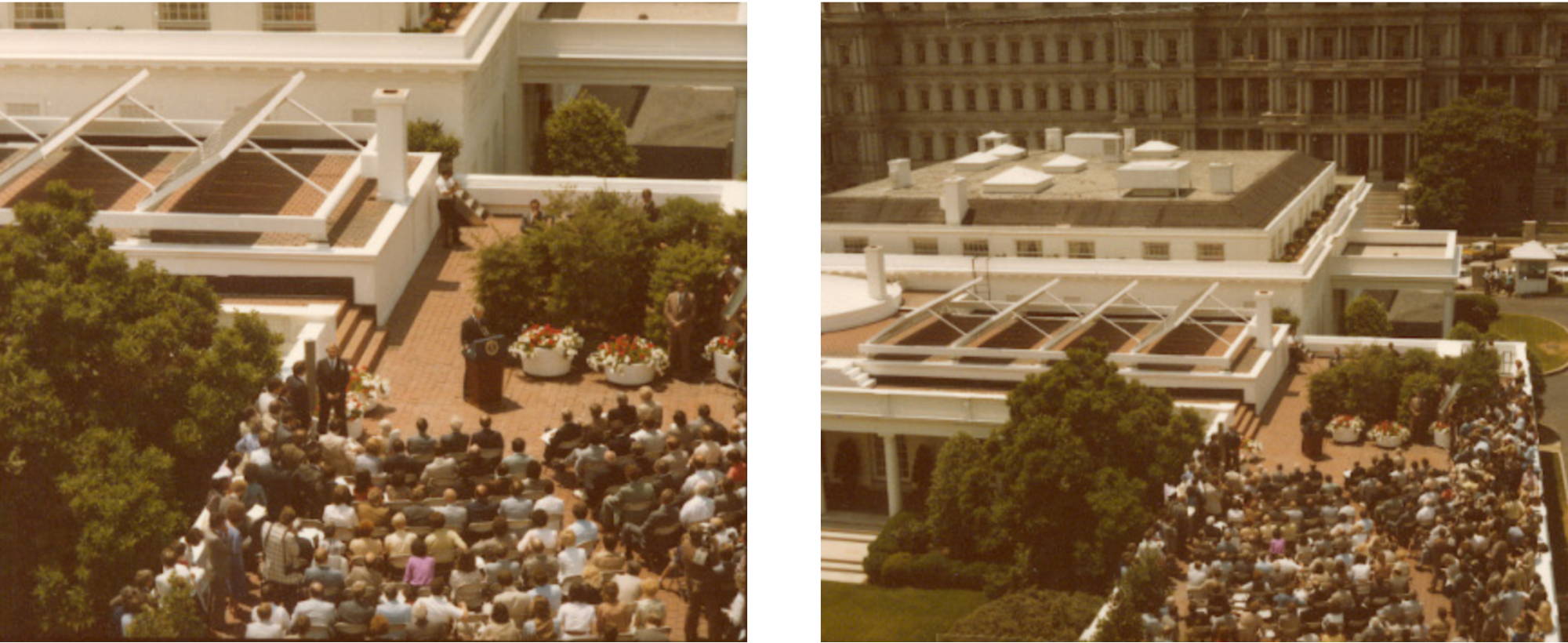A History of Solar Panels on the White House
Estimated reading time: 4 minutes
The White House, located at 1600 Pennsylvania Avenue NW in Washington, D.C., is the official residence and workplace of the President of the United States. As a symbol of American power and prestige, it's been at the forefront of many technological innovations and environmental initiatives.
One of the most notable efforts to promote renewable energy at the White House can be seen in the repeated addition of solar panels. This article will explore the history of administrations' decisions to install or remove solar energy, the current status of solar as a government-used power source, and some basic solar history.
The Carter Administration's Solar Water Heaters
Solar panels as we know them today were technically invented in New York in 1883 by Charles Fritts, when he successfully produced the photovoltaic effect with selenium cells.
However, this discovery was not deemed viable at the time, as his solar setup boasted a whopping efficiency of less than one percent. Later, after Russell Shoemaker Ohl started experimenting with silicon in the 1940s, scientists were able to achieve up to 6% efficiency--an amazing development at the time, but less than half the efficiency of most PV panels today.
Due to the high expense and low efficiency of PV panels, the first solar panels that graced the White House roof were actually thermal collectors, which use solar energy to heat water. This installation was ordered by President Jimmy Carter as part of his energy policy, and were seen as a symbol of America's commitment to innovation and renewable resources.
At the dedication of the installation, President Carter predicted "In the year 2000 this solar water heater behind me, which is being dedicated today, will still be here supplying cheap, efficient energy…. A generation from now, this solar heater can either be a curiosity, a museum piece, an example of a road not taken or it can be just a small part of one of the greatest and most exciting adventures ever undertaken by the American people."
After cuts to the Department of Energy's budget, the panels were removed during West Wing roof maintenance in 1986 (under the Reagan administration).

Jimmy Carter's Solar Dedication Ceremony, 1979 | Public Domain from the US National Archives
Present Day
During the Bush administration in 2002, the National Park Service oversaw the installation of three separate solar installations.
The first included 167 PV panels placed on the roof of the central maintenance building. A smaller thermal collection system was placed on this building as well to provide hot water for the grounds maintenance staff. The third system was placed on the White House pool cabana roof to heat the hot tub and shower, with excess energy being sent to the pool.
In 2010, President Barack Obama announced that he would add solar panels on the White House residence roof as part of his effort to promote clean energy and reduce greenhouse gas emissions. The panels were installed in 2013, and are now providing a portion of the electricity used in the White House.
The installation of solar panels on the White House has been seen as a symbolic gesture, and the installation also sends a message to the American public that renewable energy is a viable and important option for meeting our energy needs.

The South Facade of the Residence, where the White House's current rooftop solar installation is visible
Looking Ahead
The White House's solar history is one example of the growing trend toward renewable energy in the United States.
Also interesting to see is the evolution of solar as a whole. The solar industry has leapt forward significantly since Charles Fritts first managed to produce a photovoltaic effect in 1883, but the American invention still provides renewable energy--now to millions of households across the country.
In recent years, solar and wind power have become more affordable and more widely available. The White House solar panels serve as a symbol of the importance of clean energy, and as a reminder that every individual and institution can make a difference in keeping our Mother Earth healthy and happy.
As the industry expands, the commonality of solar power and other clean energy in America is only expected to increase, including installations on government buildings. In 2022, 22% of power generated in the USA was from renewable sources.